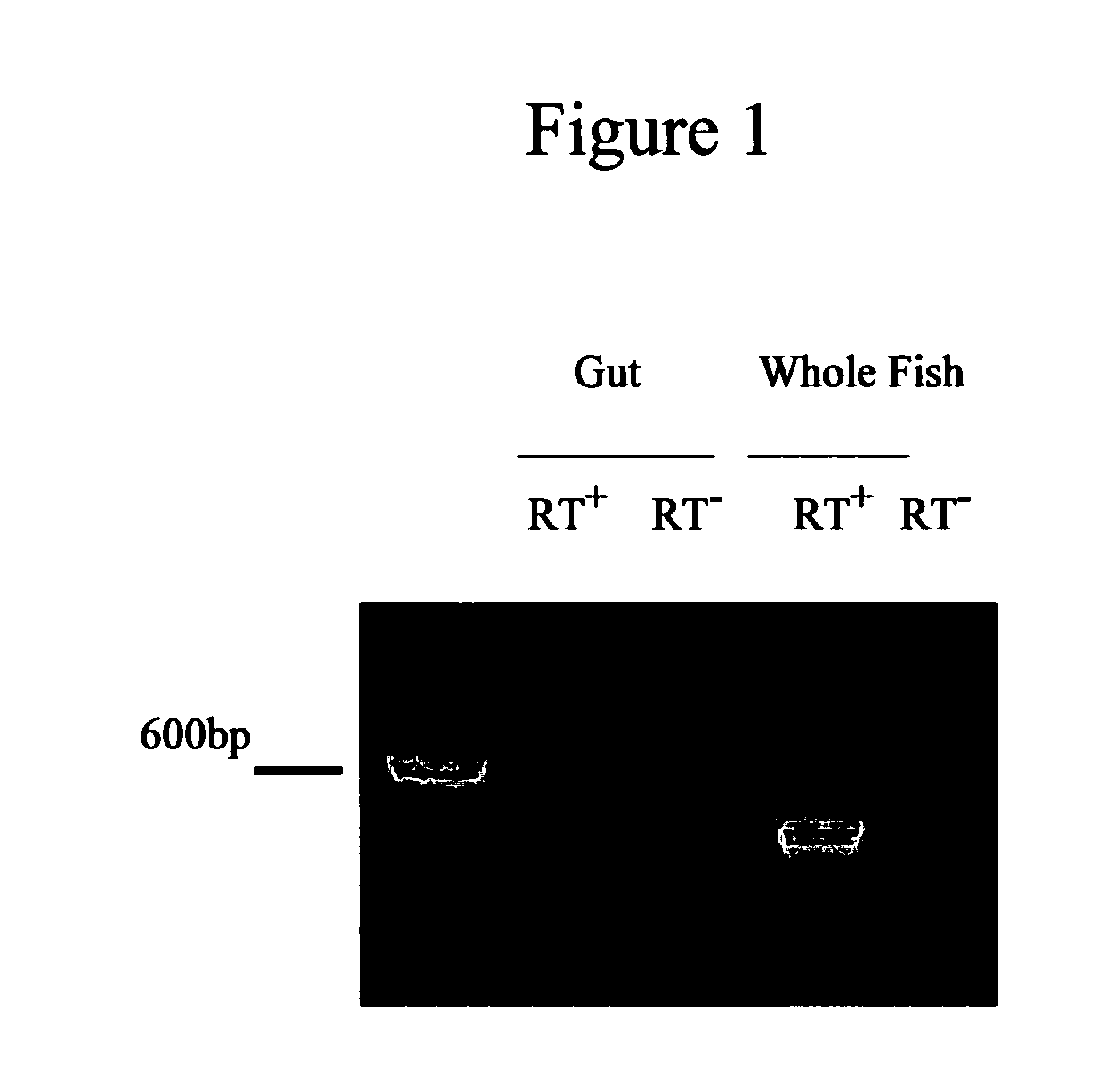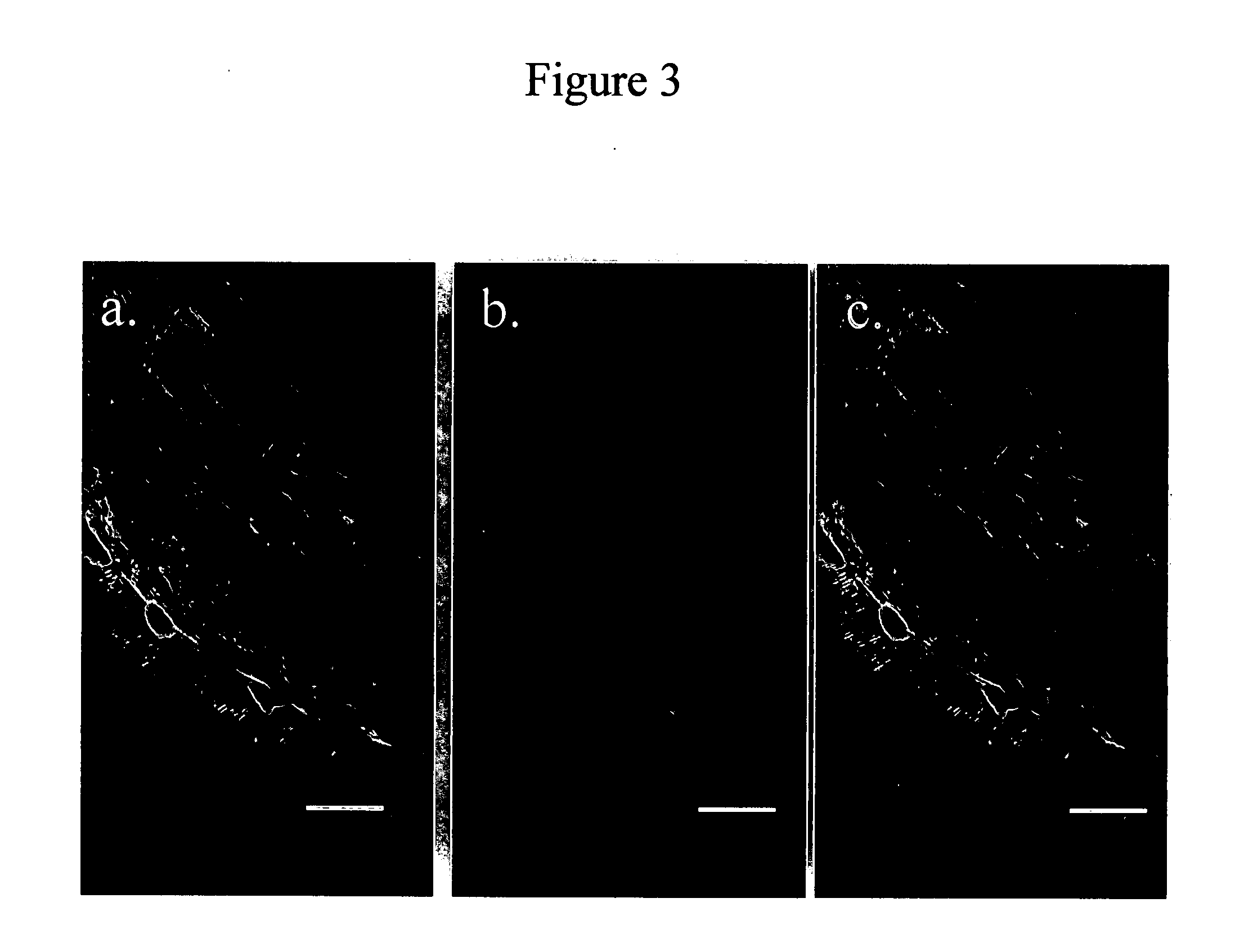Zebrafish model for assessing gastrointestinal motility
- Summary
- Abstract
- Description
- Claims
- Application Information
AI Technical Summary
Benefits of technology
Problems solved by technology
Method used
Image
Examples
example 1
[0042] Zebrafish larvae were maintained according to standard methods, described in the Zebrafish Book (Westerfield, 1993, The Zebrafish Book, University of Oregon Press, Eugene, Oreg.), in accordance with IUCAC guidelines. Wild type larvae and adults were obtained from Scientific Hatcheries, Huntington Beach, Calif. Larvae were also obtained from Mayo Clinic, Rochester, Minn., and Rosewell Park, Buffalo, N.Y. Spab5 mutant zebrafish were obtained from Washington University, St. Louis, Mo. Immunohistochemistry was performed on larvae and on freshly dissected adult GI tissue. Tissues were fixed in ice-cold acetone for 15 minutes, washed in PBS, and incubated in ACK2 (1:100) for 48 hours at 4° C. Tissues were washed and incubated with secondary antibody (1:200 dilution) for 24-48 hours at 4° C. Anti-desmin, anti HuC / HuD, (Molecular Probes), and anti cKIT (abcam) required 4% paraformaldehyde fixation overnight. Analysis was performed using a laser scanning confocal microscope (Zeiss LSM...
example 2
[0043] This Example describes an experiment designed to detect the levels of kita mRNA in the zebrafish GI tract.
[0044] Primers were designed based on the zebrafish kita gene (AF153446) (62). RT-PCR was performed using total RNA isolated from the adult zebrafish GI tract, or whole zebrafish. A 640 bp product, the expected size of kita mRNA, was amplified using primers specific for the zebrafish kita gene (FIG. 1). These data indicate that kita mRNA is expressed in the GI tract of zebrafish, suggesting that KIT protein is expressed in the zebrafish GI tract.
example 3
[0045] Pacemaker cells in human and other mammalian tissues are identified and distinguished from surrounding cells using antibodies to the KIT protein. This Example describes an experiment in which KIT-like immunoreactivity was detected in the zebrafish GI tract.
[0046] Immunohistochemistry was performed in an essentially identical manner as previously described for murine cell cultures (68). Briefly, after removal of GI tissue from adult zebrafish, tissues were fixed in ice-cold acetone, and incubated overnight at 4° C. with primary antibody, rinsed, and incubated with secondary antibody conjugated to CY3. These steps were identical to those used for identifying ICC within murine and guinea pig small intestine. FIG. 2 shows cells identified in the zebrafish GI tract using ACK2, a rat monocolonal antibody specific for an extracellular domain of the c-KIT protein (Chemicon). The image shows a stack-reconstructed confocal image resulting from compression of 27 optical sections, compr...
PUM
 Login to View More
Login to View More Abstract
Description
Claims
Application Information
 Login to View More
Login to View More - R&D
- Intellectual Property
- Life Sciences
- Materials
- Tech Scout
- Unparalleled Data Quality
- Higher Quality Content
- 60% Fewer Hallucinations
Browse by: Latest US Patents, China's latest patents, Technical Efficacy Thesaurus, Application Domain, Technology Topic, Popular Technical Reports.
© 2025 PatSnap. All rights reserved.Legal|Privacy policy|Modern Slavery Act Transparency Statement|Sitemap|About US| Contact US: help@patsnap.com



